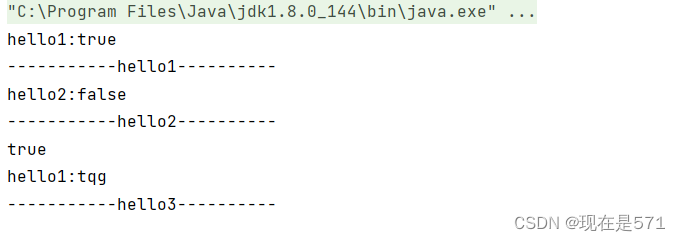一.引言
1.简介:
在Spring MVC中,我们可以使用自定义注解来扩展和定制化我们的应用程序。自定义注解是一种通过Java的注解机制定义的特殊注解,可以应用于控制器类、方法或者方法参数上,以实现不同的功能和行为。(注解相关类都包含在java.lang.annotation包中。)
2、可实现功能
1.路由映射:可以定义一个自定义注解来标注控制器方法,以指定该方法的URL映射路径。
2.权限控制:可以定义一个自定义注解,用于标记需要进行权限验证的方法,从而实现简单的权限控制逻辑。
3.参数验证:可以定义一个自定义注解,用于标记方法参数,然后结合AOP等技术,在方法执行前或后进行参数的验证和校验。
4.日志记录:可以定义一个自定义注解,用于标记需要进行日志记录的方法,从而实现日志的统一处理。
5.缓存控制:可以定义一个自定义注解,用于标记需要进行缓存管理的方法,从而实现缓存的自动化管理。
3、使用自定义注解流程
1.定义注解:使用注解语法,在相关的注解类上定义自定义注解,可以指定注解的目标范围和属性。
2.标记使用:在控制器类、方法或者方法参数上使用自定义注解,标识需要应用自定义逻辑的地方。
3.处理注解:通过Spring的AOP、拦截器等机制,对标记了特定自定义注解的类、方法或者参数进行处理,实现相关的功能。
二.java的分解类
1、JDK基本注解
@Override:重写
应用:一般出现在接口实现类里面
@Target(ElementType.METHOD) @Retention(RetentionPolicy.SOURCE) public @interface Override { }
@SuppressWarnings(value = "unchecked")
应用:压制编辑器警告
@Target({TYPE, FIELD, METHOD, PARAMETER, CONSTRUCTOR, LOCAL_VARIABLE}) @Retention(RetentionPolicy.SOURCE) public @interface SuppressWarnings { String[] value(); }
2、JDK元注解
@Retention:定义注解的保留策略
@Retention(RetentionPolicy.SOURCE) //注解仅存在于源码中,在class字节码文件中不包含
@Retention(RetentionPolicy.CLASS) //默认的保留策略,注解会在class字节码文件中存在,但运行时无法获得,
@Retention(RetentionPolicy.RUNTIME) //注解会在class字节码文件中存在,在运行时可以通过反射获取到@Target:指定被修饰的Annotation可以放置的位置(被修饰的目标)
@Target(ElementType.TYPE) //接口、类
@Target(ElementType.FIELD) //属性
@Target(ElementType.METHOD) //方法
@Target(ElementType.PARAMETER) //方法参数
@Target(ElementType.CONSTRUCTOR) //构造函数
@Target(ElementType.LOCAL_VARIABLE) //局部变量
@Target(ElementType.ANNOTATION_TYPE) //注解
@Target(ElementType.PACKAGE) //包
注:可以指定多个位置,例如:
@Target({ElementType.METHOD, ElementType.TYPE}),也就是此注解可以在方法和类上面使用@Inherited:指定被修饰的Annotation将具有继承性
@Documented:指定被修饰的该Annotation可以被javadoc工具提取成文档.
3、自定义注解
注解分类(根据Annotation是否包含成员变量,可以把Annotation分为两类):
标记Annotation:
没有成员变量的Annotation; 这种Annotation仅利用自身的存在与否来提供信息元数据Annotation:
包含成员变量的Annotation; 它们可以接受(和提供)更多的元数据;
4、如何自定义注解 ?
使用@interface关键字, 其定义过程与定义接口非常类似, 需要注意的是:
Annotation的成员变量在Annotation定义中是以无参的方法形式来声明的, 其方法名和返回值类型定义了该成员变量的名字和类型,
而且我们还可以使用default关键字为这个成员变量设定默认值;
三.使用自定义注解
1.配置pom.XMl
<?xml version="1.0" encoding="UTF-8"?>
<project xmlns="http://maven.apache.org/POM/4.0.0" xmlns:xsi="http://www.w3.org/2001/XMLSchema-instance"
xsi:schemaLocation="http://maven.apache.org/POM/4.0.0 https://maven.apache.org/xsd/maven-4.0.0.xsd">
<modelVersion>4.0.0</modelVersion>
<parent>
<groupId>org.springframework.boot</groupId>
<artifactId>spring-boot-starter-parent</artifactId>
<version>2.3.7.RELEASE</version>
<relativePath/> <!-- lookup parent from repository -->
</parent>
<groupId>com.xzs</groupId>
<artifactId>spboottest01</artifactId>
<version>0.0.1-SNAPSHOT</version>
<name>spboottest01</name>
<description>Demo project for Spring Boot</description>
<properties>
<java.version>8</java.version>
</properties>
<dependencies>
<dependency>
<groupId>org.springframework.boot</groupId>
<artifactId>spring-boot-starter-web</artifactId>
</dependency>
<dependency>
<groupId>org.springframework.boot</groupId>
<artifactId>spring-boot-starter-test</artifactId>
<!-- <scope>test</scope>-->
</dependency>
</dependencies>
<build>
<plugins>
<plugin>
<groupId>org.springframework.boot</groupId>
<artifactId>spring-boot-maven-plugin</artifactId>
</plugin>
</plugins>
</build>
</project>2.了解什么是枚举?
枚举类是Java中一种特殊的数据类型,用于定义一组固定的命名常量。枚举类型提供了一种更强大、更安全和更易读的方式来表示一组相关的常量。在Java中,枚举类型是通过关键字enum来定义的。
作用:枚举类的作用是提供一种类型安全的方式来表示一组固定的值,避免使用数字或字符串常量时可能出现的错误。通过使用枚举类型,可以限制变量只能取预定义的值,并且可以在代码中使用这些常量的名称来提高可读性和可维护性。
package com.xzs.annotation; public enum TranscationModel { Read, Write, ReadWrite }
3、自定义注解类
1.MyAnnotation1
package com.xzs.annotation.pi;
import java.lang.annotation.*;
@Target({ElementType.TYPE, ElementType.FIELD, ElementType.METHOD})
@Retention(RetentionPolicy.RUNTIME)
@Documented
public @interface MyAnnotation1 {
int id();
String name();
}2、MyAnnotation2
package com.xzs.annotation.pi;
import com.xzs.annotation.TranscationModel;
import java.lang.annotation.*;
/**
* MyAnnotation2注解可以用在方法上
* 注解运行期也保留
* 不可继承
*/
@Target(ElementType.METHOD)
@Retention(RetentionPolicy.RUNTIME)
@Documented
public @interface MyAnnotation2 {
TranscationModel model() default TranscationModel.ReadWrite;
}.3、MyAnnotation3
package com.xzs.annotation.pi;
import com.xzs.annotation.TranscationModel;
import java.lang.annotation.*;
@Target(ElementType.METHOD)
@Retention(RetentionPolicy.RUNTIME)
@Inherited
@Documented
public @interface MyAnnotation3 {
TranscationModel[] models() default TranscationModel.ReadWrite;
}.4、TestAnnotation
package com.xzs.annotation.pi;
import java.lang.annotation.ElementType;
import java.lang.annotation.Retention;
import java.lang.annotation.RetentionPolicy;
import java.lang.annotation.Target;
//@Retention(RetentionPolicy.SOURCE)
@Retention(RetentionPolicy.RUNTIME)
@Target(ElementType.FIELD)
public @interface TestAnnotation {
String value() default "默认value值";
String what() default "这里是默认的what属性对应的值";
}案例1:
1.创建一个测试类
package com.xzs.annotation.pi;
import com.xzs.annotation.TranscationModel;
@MyAnnotation1(id = 1, name = "lei")
public class DemoTest {
@MyAnnotation1(id = 2, name = "sx")
private Integer age;
@MyAnnotation2(model = TranscationModel.ReadWrite)
public void select() {
System.out.println("select");
}
@MyAnnotation3(models = {TranscationModel.Read, TranscationModel.Write, TranscationModel.ReadWrite})
public void up() {
System.out.println("up");
}
}2、获取类上的注解
@Test
public void list() throws Exception {
// 获取类上的注解
MyAnnotation1 annotation1 = DemoTest.class.getAnnotation(MyAnnotation1.class);
System.out.println(annotation1.name() + "/" + annotation1.id());
}  3.获取方法上的注解
3.获取方法上的注解
@Test
public void list2() throws Exception {
// 获取方法上的注解
MyAnnotation2 myAnnotation2 = DemoTest.class.getMethod("select").getAnnotation(MyAnnotation2.class);
System.out.println(myAnnotation2.model());
} 
4. 获取属性上的注解
@Test
public void list3() throws Exception {
// 获取属性上的注解
MyAnnotation1 myAnnotation1 = DemoTest.class.getDeclaredField("age").getAnnotation(MyAnnotation1.class);
System.out.println(myAnnotation1.name() + "/" + myAnnotation1.id());
}.5、遍历方法上的注解
@Test
public void edit() throws Exception {
MyAnnotation3 myAnnotation3 = DemoTest.class.getMethod("up").getAnnotation(MyAnnotation3.class);
for (TranscationModel model : myAnnotation3.models()
) {
System.out.println(model);
}
}
案例2:
1.测试类:
package com.xzs.annotation.p2;
import com.xzs.annotation.pi.TestAnnotation;
public class Demo2 {
@TestAnnotation(value = "这就是value对应的值_msg1", what = "这就是what对应的值_msg1")
private static String msg1;
@TestAnnotation("这就是value对应的值1:msg2")
private static String msg2;
@TestAnnotation(value = "这就是value对应的值2:msg3")
private static String msg3;
@TestAnnotation(what = "这就是what对应的值:msg4")
private static String msg4;
}package com.xzs.annotation.p2;
import com.xzs.annotation.pi.TestAnnotation;
import org.junit.jupiter.api.Test;
public class Demo2Test {
@Test
public void test1() throws Exception {
TestAnnotation msg1 = Demo2.class.getDeclaredField("msg1").getAnnotation(TestAnnotation.class);
System.out.println(msg1.value());
System.out.println(msg1.what());
}
@Test
public void test2() throws Exception{
TestAnnotation msg2 = Demo2.class.getDeclaredField("msg2").getAnnotation(TestAnnotation.class);
System.out.println(msg2.value());
System.out.println(msg2.what());
}
@Test
public void test3() throws Exception{
TestAnnotation msg3 = Demo2.class.getDeclaredField("msg3").getAnnotation(TestAnnotation.class);
System.out.println(msg3.value());
System.out.println(msg3.what());
}
@Test
public void test4() throws Exception{
TestAnnotation msg4 = Demo2.class.getDeclaredField("msg4").getAnnotation(TestAnnotation.class);
System.out.println(msg4.value());
System.out.println(msg4.what());
}
}




案例3:
自定义注解
package com.xzs.annotation.p3;
import java.lang.annotation.*;
@Documented
@Target({ElementType.PARAMETER})
@Retention(RetentionPolicy.RUNTIME)
public @interface IsNotNull {
boolean value() default false;
}测试类
package com.xzs.annotation.p3;
import org.junit.jupiter.api.Test;
import java.lang.reflect.Method;
import java.lang.reflect.Parameter;
public class Demo3Test {
@Test
public void hello1() throws Exception {
Demo3 demo3 = new Demo3();
for (Parameter parameter : demo3.getClass().getMethod("hello1", String.class).getParameters()) {
IsNotNull annotation = parameter.getAnnotation(IsNotNull.class);
if (annotation != null) {
System.out.println("hello1:" + annotation.value());//true
System.out.println(("-----------hello1----------"));
}
}
}
@Test
public void hello2() throws Exception {
Demo3 demo3 = new Demo3();
for (Parameter parameter : demo3.getClass().getMethod("hello2", String.class).getParameters()) {
IsNotNull annotation = parameter.getAnnotation(IsNotNull.class);
if (annotation != null) {
System.out.println("hello2:" + annotation.value());//false
System.out.println(("-----------hello2----------"));
}
}
}
@Test
public void hello3() throws Exception {
// 模拟浏览器传递到后台的参数 解读@requestParam
String name = "tqg";
Demo3 demo3 = new Demo3();
Method method = demo3.getClass().getMethod("hello1", String.class);
for (Parameter parameter : method.getParameters()) {
IsNotNull annotation = parameter.getAnnotation(IsNotNull.class);
if (annotation != null) {
System.out.println(annotation.value());//true
if (annotation.value() && !"".equals(name)) {
method.invoke(demo3, name);
}
System.out.println(("-----------hello3----------")); }
}
}}

四、Aop自定义注解应用
1、自定义注解
package com.xzs.annotation.aop;
import java.lang.annotation.ElementType;
import java.lang.annotation.Retention;
import java.lang.annotation.RetentionPolicy;
import java.lang.annotation.Target;
@Target(ElementType.METHOD)
@Retention(RetentionPolicy.RUNTIME)
public @interface MyLog {
String desc();
}2、配置spring-context.xml
<?xml version="1.0" encoding="UTF-8"?>
<beans xmlns="http://www.springframework.org/schema/beans"
xmlns:xsi="http://www.w3.org/2001/XMLSchema-instance"
xmlns:context="http://www.springframework.org/schema/context"
xmlns:tx="http://www.springframework.org/schema/tx"
xmlns:aop="http://www.springframework.org/schema/aop"
xsi:schemaLocation="http://www.springframework.org/schema/beans
http://www.springframework.org/schema/beans/spring-beans.xsd
http://www.springframework.org/schema/context
http://www.springframework.org/schema/context/spring-context.xsd
http://www.springframework.org/schema/tx
http://www.springframework.org/schema/tx/spring-tx.xsd
http://www.springframework.org/schema/aop
http://www.springframework.org/schema/aop/spring-aop.xsd">
<!--spring框架与mybatis整合配置文夹加载到spring上下文中-->
<import resource="spring-mybatis.xml"></import>
<context:annotation-config/>
<!-- 用注解方式注入bean,并指定查找范围:com.javaxl.ssh2及子子孙孙包-->
<context:component-scan base-package="com.xzs"/>
<!--开启动态代理-->
<aop:aspectj-autoproxy/>
</beans>3、应用注解
package com.xzs.annotation.aop;
import org.aspectj.lang.JoinPoint;
import org.aspectj.lang.annotation.Aspect;
import org.aspectj.lang.annotation.Before;
import org.aspectj.lang.annotation.Pointcut;
import org.aspectj.lang.reflect.MethodSignature;
import org.slf4j.Logger;
import org.slf4j.LoggerFactory;
import org.springframework.stereotype.Component;
@Component
@Aspect
public class MyLogAspect {
private static final Logger logger = LoggerFactory.getLogger(MyLogAspect.class);
@Pointcut("@annotation(com.xzs.annotation.aop.MyLog)")
private void MyValid() {
}
@Before("MyValid()")
public void before(JoinPoint joinPoint) {
MethodSignature signature = (MethodSignature) joinPoint.getSignature();
logger.debug("[" + signature.getName() + " : start.....]");
System.out.println("[" + signature.getName() + " : start.....]");
MyLog myLog = signature.getMethod().getAnnotation(MyLog.class);
logger.debug("【目标对象方法被调用时候产生的日志,记录到日志表中】:" + myLog.desc());
System.out.println("【目标对象方法被调用时候产生的日志,记录到日志表中】:" + myLog.desc());
}
}
4、Controller层代码
package com.xzs.web;
import com.xzs.annotation.aop.MyLog;
import org.springframework.stereotype.Component;
import org.springframework.web.bind.annotation.RequestMapping;
@Component
@RequestMapping("/log")
public class LogController {
@RequestMapping("/log")
@MyLog(desc = "这是结合spring aop知识,讲解自定义注解应用的一个案例")
public void testLogAspect() {
System.out.println("这里随便来点啥,最好是唱跳rap");
}
}结果:

